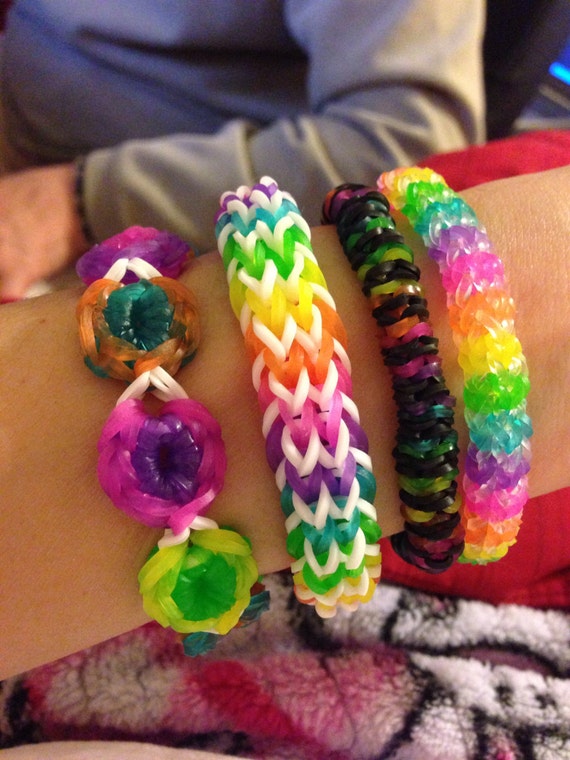
#Loom band bracelets how to
Initiating or asking to join others in an activity is often a safe option for children who might be uncertain about how to begin new friendships. Children can be encouraged to develop their leadership skills in passing their expertise onto other people.

Loom bands are popular with both sexes, and, with supervision, the skills can be taught to children as young as four. Not only that, but younger children are exposed to lingo they’ll use later in geometry (e.g., rhombus and and hexagon designs). Several of the patterns for bracelets involve rotating the peg board, and thinking what something will look like from the sides and underneath.Ĭhildren also need to use basic maths skills to work out how many bands of each colour they will need to make various sizes of bracelets and rings.

Perceptual skillsĬreating a pattern involves skills in being able to imagine what you want the end result to look like. I’ve seen several Occupational Therapists’ blogs praising the usefulness of the Rainbow Loom in teaching and rehabilitating these vital skills. Fine motor skillsįor kids who have fine motor skills difficulties, using loom bands encourages correct pencil grip and strengthens fine grasping movements by improving dexterity. Learning to make loom bands means you have to watch, read, and persistently apply new information. Attention and concentrationĬhildren, who otherwise may struggle to sit still, follow instructions and stay on task can often surprise us when they are motivated to achieve something. It reduces potential feelings of being ‘interrogated’ with so many questions and is a great way to redirect all that nervous fidgeting! 2. Many kids of all ages (adults too!) engage better when they are involved in another task. Children often don’t know what to say or how to act early on in counselling, but asking them to show us how to make a bracelet is an opportunity for them to relax into something that they know how to do.

We have often found that by starting with a familiar activity, this can quickly help to establish rapport and encourage self-confidence. When children first come to counselling it’s a novel experience and usually it takes a little while to settle into the idea of what the norms and rules are for this particular type of interaction. So next time you’re pulling yet another handful of rubber bands from the vacuum cleaner and wondering if this is all just clever marketing, here are some points to ponder to (retrospectively) justify your purchase! 1. Loom bands are possibly just another passing childhood fad but here at Melbourne Child Psychology, we’re fans of the Rainbow Loom for their many therapeutic benefits.


 0 kommentar(er)
0 kommentar(er)
